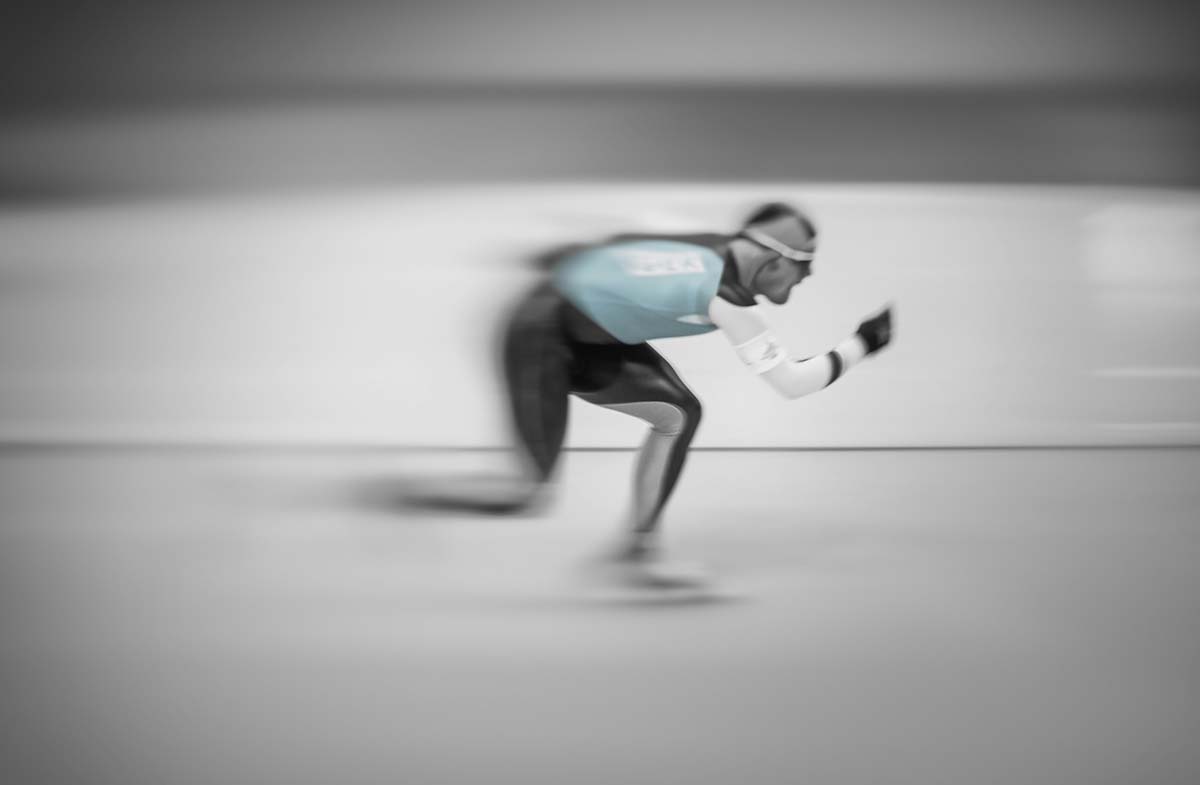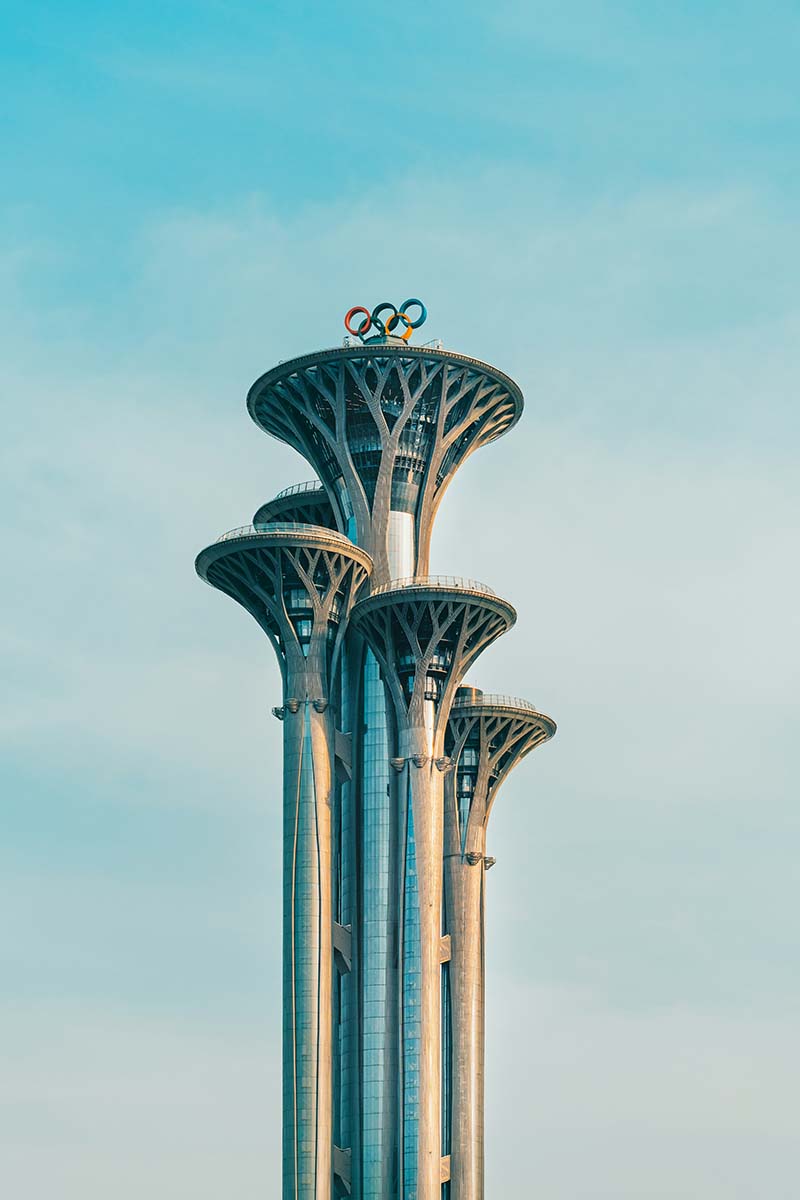CO2 refrigeration has proven to be an effective solution in multiple use cases. Recently, R-744 found itself on the grandest athletic stage of them all – the 2022 Beijing Olympics – where it earned a proverbial gold medal for its cooling performance, efficiency, and sustainability.
A Worldwide Commitment to Climate Action
The Beijing Organizing Committee, in conjunction with the UN Sports for Climate Action Framework, established two overarching goals entering the event: To set a clear trajectory for sports communities to combat climate change and to use sports as a unifying tool among citizens worldwide for climate action. After exhaustive research, transcritical CO2 systems were selected for their efficiency, performance, and sustainability. The 2022 event marks the first time in history a CO2 refrigeration system was used to create ice at the Winter Olympics.
Four ice rinks at the 2022 Beijing Olympics utilized CO2 systems, including the National Speed Skating Oval, Capital Indoor Stadium, Capital Short Track Speed Skating Training Hall, and Wukesong Ice Hockey Training Hall.
CO2 refrigeration operates with a cooling efficiency that is 1.2 times higher than traditional hydrofluorocarbon (HFC) refrigerants and can maintain a temperature consistency of 0.5°C or less across all ice surfaces, keeping the surface smooth.
By opting for CO2 refrigeration, the Olympics’ sustainability efforts would have the equivalent carbon effects of 3,900 automobiles off the road or the planting 1.2 million trees.
“The Olympic Games are first and foremost a sporting event, but with their global visibility, they also provide an important platform to showcase sustainable solutions,” said Marie Sallois, IOC director for sustainability, in a press release.

HIGHLY EFFICIENT: CO2 refrigeration operates with a cooling efficiency that is 1.2 times higher than traditional hydrofluorocarbon (HFC) refrigerants and can maintain a temperature consistency of 0.5°C or less across all ice surfaces. (Courtesy of Unsplash)
Transcritical CO2 Refrigeration
CIMCO Refrigeration, a refrigeration contractor based in Burlington, Ontario, Canada, served as a consultant for the Olympics. Based on the company’s expertise, it recommended 1,000 TR, based on 5°F suction and 100°F condensing. These transcritical CO2 systems included:
- Six skids, each with six compressors, providing approximately 190 TR at minus 18°C SST and 38°C SCT;
- Six adiabatic gas coolers, one per skid;
- Four CO2 re-circulator vessel packages, each complete with two CO2 pumps;
- Vessels connected to common suction and common liquid drains;
- A floor design consisting of 10 refrigerated floor zones, including two track zones and two arenas with dedicated pumping systems. The other six zones connected into two pumping systems but with individual zone valves and temperature control; and
- A floor network constructed of stainless 20-mm (3/4-inch) pipe and stainless headers sized to the flow rate.
Attention to Detail
When installing or commissioning a CO2 refrigeration ice system, Jason Hill, training, development, and commissioning with CIMCO, creates a checklist.
“It’s always electrical first,” said Hill on the Refrigeration Mentor podcast [video below]. “We first ensure the electrical connections are tight – even if the unit is coming directly from the manufacturer, because these systems come from hundreds of miles away. Then, it’s dry testing, making sure everything is stroking the way it should, checking bolts, examining compressor connections, conducting pressure testing, etc. And always have another guy with you to double- and triple-check everything on your checklist, including triple evacuation, putting in the initial filters and drier cores, ensuring strainers are clean, etc., because you can never be too safe.”
When it comes time to lay and maintain the ice, ambient and surface temperatures are crucially important.
“To start making ice, we need the slab temperature to be around 16°-19°F,” Hill said. “When you get to the site, if the ambient conditions are slightly different than whatever was uploaded at the factory, you may have to make a minor tweak. Make sure you know which bottles are vapor and liquid and weigh them so you know exactly how much you’re putting in the system.”

BE IN CONTROL: Pay close attention during testing to ensure controls are set up properly. (Courtesy of Unsplash)
Setting up and managing the controls of a CO2 system is important as well. It’s important to pay close attention during testing to ensure everything is operating as planned.
“We rely on the manufacturers’ set points, and we’ll always confirm the software matches and has received the latest updates,” said Hill. “Each system has unique controllers — they’re not going to be the same on any two systems. For example, with gas coolers, there are oftentimes two controllers — one for the fans and one for the water — and each has to be set up to make sure everything’s working properly. With the fans, you need to know the performance temperature at 30%, 70%, etc. And for the water, you need to know when the solenoid should open – these are things you must learn through testing.”
CO2 transcritical ice rinks are chock full of unique challenges and hurdles, and Hill said it’s important for techs to be aware of these before ever stepping on the job.
“These are very different projects than synthetic packages or ammonia systems – we’re hitting temperatures I’ve never seen before,” Hill said. “The average supply and return temps are 12°-19°F. A 12° supply will typically have a Delta of 4°, so that’s a 16° return. But some of the CO2 rinks we’ve dealt with are getting down to 6°F, which is going to give you a 11°-12° return.
“Every hour or hour and a half, a flood is occurring on the surface, and you have to ensure the ice sets up properly – not too quick or too slow,” continued Hill. “Getting it just right is a challenge – it’s like an art.”
Even with all of his experience, Hill always expects the unexpected.
“I’ve been in the industry quite a while, and nearly every day, I see something on these packages that makes me go, ‘wow,’” he said. “And I like that kind of stuff because it keeps me from getting bored. You learn something new on every project, which is pretty cool.”
CO2 refrigeration is new to many HVAC contractors, and Hill encourages apprentices and rookies to be as curious as possible when learning on the job.
“If a tech has any questions, they shouldn’t hesitate to ask them,” said Hill. “If they don’t understand what this does, that does, or how things differ on a particular package — they need to know it’s OK to ask questions. Pick the brains of the guys who are there and do some research afterward. Study the manual when you get back to your hotel room. Learn how things work and what they’re designed to do. You’ll be better off because of it.”





